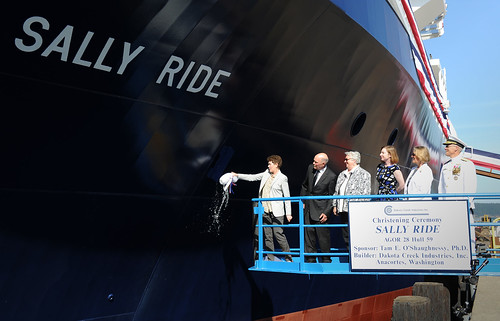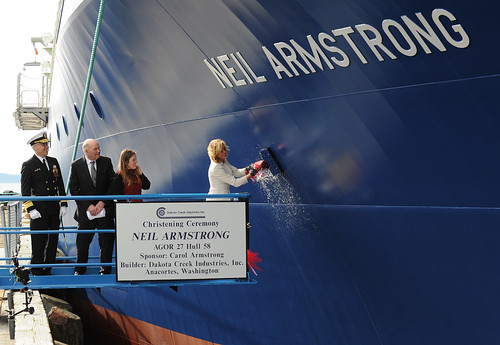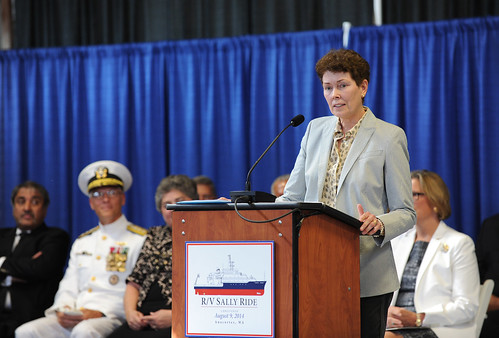 |
| Why was I feeling so much stress about capturing this photograph? |
I was wondering during a recent assignment in Anacortes, Wash., while covering the christening of the Research Vessel Sally Ride if even seemingly easy assignments ever become routine.
I was just out there to photograph the christening ceremony of the R/V Neil Armstrong in March and I had no reason to believe that this event would be any different. Easy right? Probably the most important photograph during a ship's christening is the moment the sponsor breaks a bottle of champagne on the hull and during the Armstrong christening I got the shot, which was made even tougher due to the sponsor having to strike the bottle three times before it broke.
 |
| Having already covered the christening of the R/V Neil Armstrong should have mitigated any stress I was feeling about covering the same ceremony for the Sally Ride, right? |
That photograph of the bottle break along with the other coverage I provided, meant that when it came time to christen the sister ship, Sally Ride, my inbox began began to fill with inquires about whether or not I would be available to take the assignment. Of course I wanted to, ship's christenings happen only once, and being able to photograph such historic events is one of the reasons I enjoy what I do. I also realize that I'm not the only photographer capable of pulling that shot off, so was it really necessary for me to cover this assignment.
 |
| Ship's sponsor, Dr. Tam O'Shaughnessy, co-founder, chair of the board of directors and chief executive officer of Sally Ride Science, delivers remarks during the christening ceremony. The whole time I'm shooting this I'm thinking about the one shot that truly counts, the bottle break. |
The reason I questioned whether or not I would go and all the anxiety I was feeling was centered around the events timing. This christening fell right in the middle of a challenging two-week assignment that I knew would require my full attention. An assignment that took months of planning and presented a host of challenges that needed to be overcome in order to produce a product that would meet every one's expectations. I can't discuss that project now, but thinking about leaving right in the middle of that assignment to spend 36 hours in Anacortes, Wash., was a tough decision to make.
In the end I did agreed to cover the Sally Ride christening and was able to capture the shot needed to tell the story, but during the flight to Seattle and while waiting for the ceremony to start, I also spent a lot of time thinking about the topic of this post.
 |
| Rear Adm. Matthew Klunder, chief of naval research, delivers remarks. If I was going to lug my Nikon 14-24mm lens across the country, I was going to use it to capture at least one photograph. |
Why was I feeling nervous as I went over my camera settings and scouted shooting angles. Was it due to a lack of confidence in my ability or the fact that so many were depending on my coverage which needed to be transmitted within hours of the ceremonies conclusion? Or was it something else? Was I still focused on the larger assignment I had left.
I believe I've reached a point in my career where I'm confident that I can cover any photo assignment. But having confidence doesn't diminish the angst or the questioning of ability. Having confidence just means I believe I have the skills needed, skills that come from years of work, but also from constantly learning from others and a willingness to experiment and stretch my comfort zone.
So is there ever a time in ones photographic career that an assignment becomes routine, that the nervousness goes away, and the pictures just appear.
Well if there is, I'm certainly not there and I suspect that I never will be. I also suspect I'm not alone.









